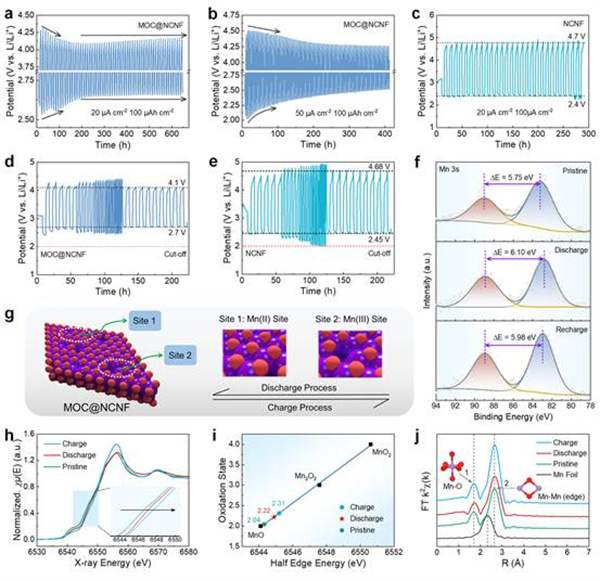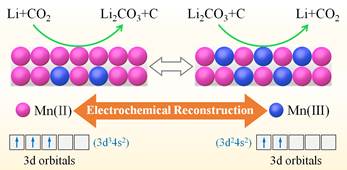XJTU researchers make significant advancements in Li-CO2 battery research

The analysis of the electrochemical activation process of MOC@NCNF and NCNF.

Schematic diagram of in-situ electrochemical reconstruction of Mn(II)/Mn(III) and catalytic process.
Professor Ding Shujiang and researcher Su Yaqiong from the School of Chemistry at Xi'an Jiaotong University (XJTU) have made significant research advancements in the development of Li-CO2 batteries, which use CO2 as an energy carrier, combining CO2 conversion and energy storage.
Despite challenges posed by the thermodynamic stability of CO2 and the insulating properties of Li2CO3, the two researchers designed a new manganese-based cathode catalyst (MOC@NCNF) with dual active sites. They systematically studied the electronic configurations of different manganese active sites and their relationship with the electrochemical performance of Li-CO2 batteries.
Their findings revealed that the initial activation phenomenon in the MOC@NCNF cathode is due to the in-situ electrochemical formation and stabilization of Mn(III). They demonstrated that Mn(II) and Mn(III) sites play crucial roles in the CO2 reduction reaction (CORR) and the CO2 evolution reaction (COER), respectively, through different charge transfer mechanisms. This discovery opens new perspectives for developing high-performance multivalent Mn-based integrated hybrid catalysts for Li-CO2 batteries.
Moreover, the MOC@NCNF cathode's excellent mechanical properties were tested in flexible Li-CO2 batteries, showing potential for use in flexible and wearable devices. This work, titled "Revealing the Indispensable Role of In Situ Electrochemically Reconstructed Mn(II)/Mn(III) in Improving the Performance of Lithium-Carbon Dioxide Batteries", was published in Advanced Materials. The first author is Liu Limin, a PhD student from XJTU, with Ding and Su serving as the corresponding authors.

